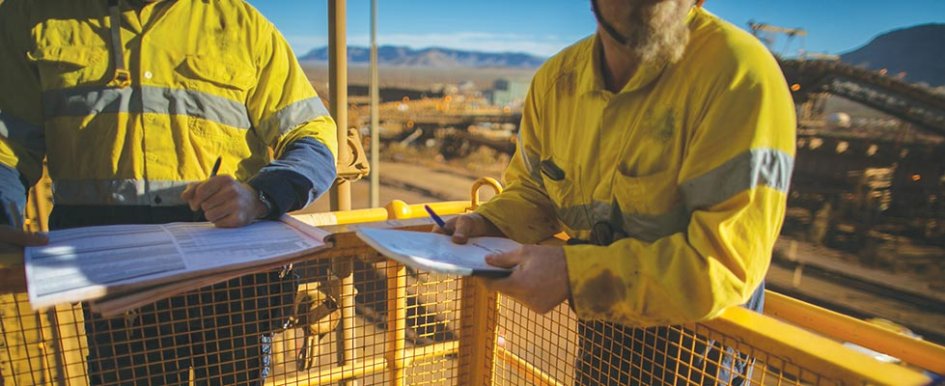
In today’s fast-moving construction industry, time really is money — especially when it comes to mobilizing crews on new jobsites. But for many small and midsized contractors, getting the green light from prequalification platforms like ISNetworld, Avetta or Veriforce can delay that timeline and jeopardize projects before they even start.
These platforms are designed to help hiring clients mitigate risk by ensuring that contractors meet a defined set of safety, financial and insurance requirements.
And while that’s a good thing for workplace safety and liability, it often creates a significant burden for smaller contractors without dedicated compliance teams.
More often than not, it’s not the quality of your work that causes the delay — it’s your paperwork. Or more specifically, your safety documentation. And even if you’ve done the job safely for 20 years, if your policies aren’t properly documented and formatted, you’re going to face delays.
The New Prequalification Reality
General contractors and hiring clients increasingly rely on third-party compliance platforms to vet vendors. These platforms look at insurance, training records, Occupational Safety and Health Administration (OSHA) logs, and — most importantly — written safety programs. If you don’t have those safety documents ready, you risk weeks and even months of back-and-forth submissions, rejections and delays.
Unfortunately, the standards vary slightly across platforms and hiring clients. One client might accept your fall protection policy, while another might reject it because it’s missing a few key words. This inconsistency forces many contractors into a reactive loop, scrambling to revise documents or hire a consultant after the rejection comes in.
The challenge? Most small contractors don’t have a safety manager. Some aren’t even sure what a compliant program is supposed to look like, let alone how to build one from scratch that passes a platform audit. The result is lost time, stress and, in some cases, lost contracts. It’s not unusual for crews to be benched while the office team tries to piece together the right paperwork to get back on-site.
Being Compliance-Ready = Competitive Advantage
Let’s say you’ve just been asked to bid a project, but the client requires preapproval on the platform they contract with. If you have your safety documents ready, aligned to their requirements and up to date, you can submit your packet in hours, not weeks. That agility helps you win jobs others can’t start.
It’s not just about being first in line: It’s about being the first to be approved and showing that you run a tight, professional operation. That message carries weight with hiring clients who are already juggling deadlines, budgets and legal risks. Being able to mobilize quickly with no compliance red flags builds trust — and trust leads to repeat work.
How It Pays Off in the Long Run
There’s a second benefit to being safety-compliant before the bid: lower workers’ compensation premiums.
Many states offer discounts for contractors with formal safety programs, return-to-work policies or drug-free workplace protocols. These include state-run programs such as Pennsylvania’s certified safety committee discount, Florida’s drug-free workplace program or Ohio’s industry-specific safety grants. On top of that, many insurance carriers offer scheduled credits for businesses that demonstrate proactive risk control.
Some of these credits are available only when you show proper documentation. So even if your field practices are top tier, you could be overpaying simply because your policies aren’t visible to the underwriter.
Contractors using prebuilt, compliant safety programs often qualify for premium reductions between 5% and 30%, depending on the state and carrier. That adds up quickly, especially if you’re paying tens of thousands in annual premiums. And the bonus? That’s money you can reinvest into training, equipment or growth.
You Don’t Need to Be a Safety Expert
For most business owners, the idea of sitting down to write a respiratory protection or heat stress program is not only intimidating — it’s completely outside their wheelhouse. And hiring a safety consultant can easily cost $10,000 to $40,000, depending on your needs.
Fortunately, tools and systems now exist that allow contractors to generate platform-aligned safety programs in minutes. Instead of spending days with generic templates, these systems walk you through a short assessment, identify exactly what you need and build documentation that passes audits the first time.
Even better? These tools can stay updated when hiring client requirements change. That means you’re not constantly chasing compliance — you’re maintaining it in the background. Whether your client updates their requirements or policies, you can regenerate the latest version with a click instead of rewriting the document from scratch.
Final Takeaway
If your company is scrambling to create safety programs when the project is already on the table, you’re playing from behind.
Being compliance-ready before the bid is no longer a luxury — it’s a competitive advantage. It gets you approved faster and on-site sooner, and it can even reduce your insurance costs.
In an industry where speed, trust and margins all matter, being prepared is one of the best investments you can make. With the right tools in place, even the smallest contractor can look and operate like a big player — without burning through time or money in the process.
